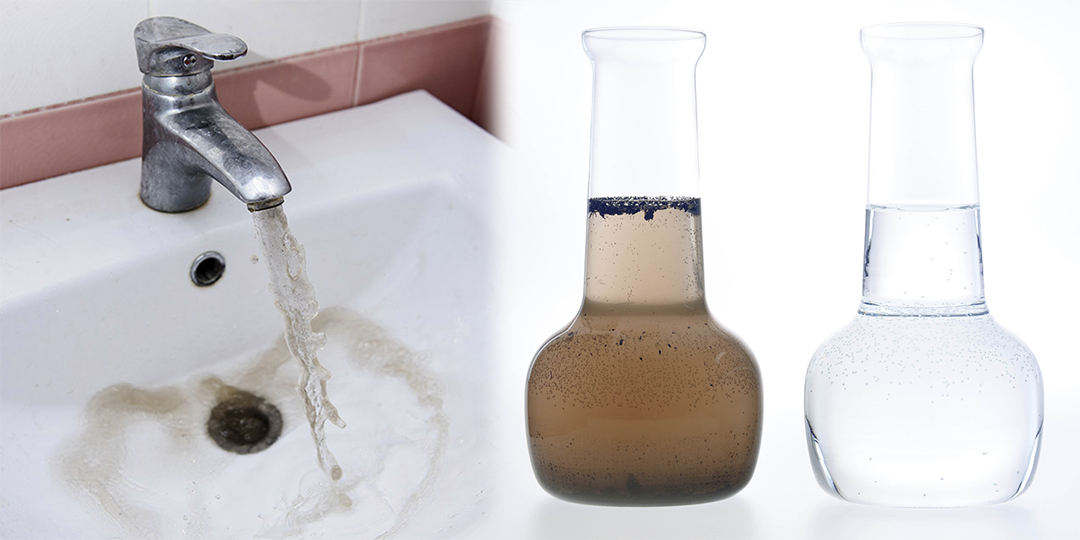Sediment and Dirt (Turbidity)
urbidity is the measure of relative clarity of a liquid. It is an optical characteristic of water and is an expression of the amount of light that is scattered by material in the water when a light is shined through the water sample. The higher the intensity of scattered light, the higher the turbidity. Material that causes water to be turbid include clay, silt, finely divided inorganic and organic matter, algae, soluble colored organic compounds, and plankton and other microscopic organisms.
Water can contain suspended solid matter consisting of particles of many different sizes. While some suspended material will be large enough and heavy enough to settle rapidly to the bottom of the container if a liquid sample is left to stand (the settable solids), very small particles will settle only very slowly or not at all if the sample is regularly agitated or the particles are colloidal. These small solid particles cause the liquid to appear turbid.
Turbidity refers to the amount of small particles of solid matter suspended in water as measured by the amount of scattering and absorption of light rays caused by the particles. Turbidity blocks light rays and makes the water opaque. Turbidity is measured in nephelometric turbidity units (NTU). Potable water should not exceed 0.5 NTU. Turbidity cannot be directly equated to suspended solids because white particles reflect more light than dark-colored particles and many small particles will reflect more light than an equivalent large particle.

Water treatment can improve cloudiness and discoloration issues.
In most cases, water cloudiness and discoloration is a noticeable issue in bath water and at the faucet(s) where water is used for drinking. To clear up water used for bathing, treating water for the whole house or building is necessary. If cloudiness or discoloration of water is only an issue for drinking water, then it is best to treat water at the faucet where it is used.


